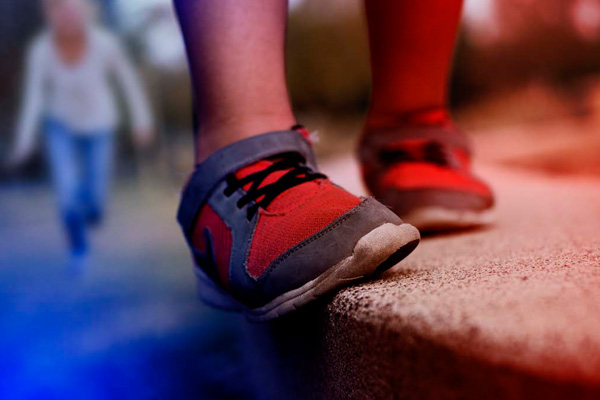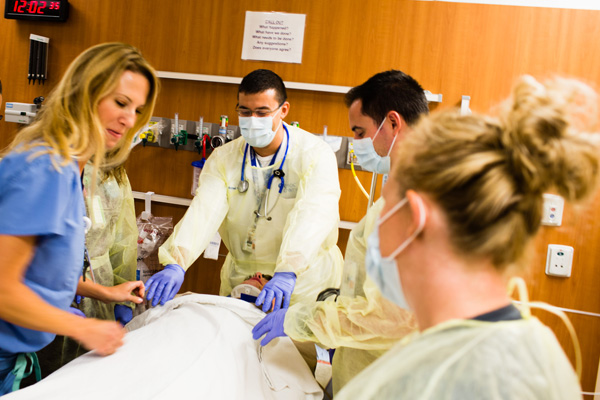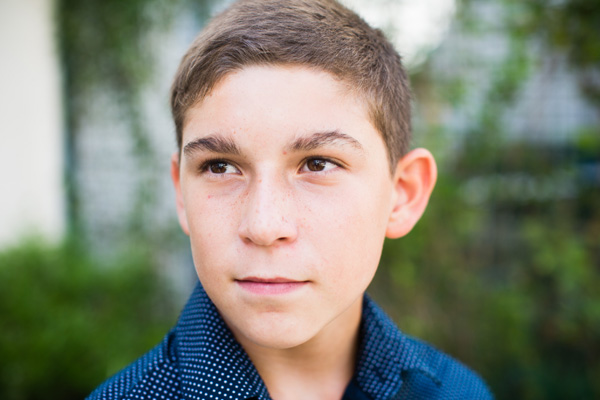Pediatric Trauma Center Opens Its Doors

Traumatic injuries in children are frightening and can happen at any time. Some children are seriously injured in falls – from windows, playground equipment or stairs. Others are gravely hurt in automobile accidents, or by being hit walking across busy streets, or in accidents around the house or in their backyards or pools.
Previously, the only choice for Orange County children sustaining these traumatic injuries involved transportation to adult trauma centers that also treat children.
This situation changed in October 2014 when CHOC was designated a Level II pediatric trauma center – the first in Orange County dedicated exclusively to treating kids.
CHOC’s new trauma center, under the direction of David Gibbs, MD, medical director of trauma, and Amy Waunch, RN, trauma program manager, provides immediate evaluation, stabilization and state-of-the-art emergency treatment to patients up to age 14. All of the staff and services involved in the trauma center, including the physicians, nurses, specialists, respiratory therapists, pharmacists, X-ray techs, social workers, chaplain and child life specialists, have extensive expertise caring for children. And that makes a difference. Research has shown that pediatric trauma patients treated in a children’s hospital experience better outcomes, with shorter lengths of stay and higher survival rates.
"There is a huge need for this research, and CHOC Children’s is uniquely positioned to conduct it. We can do a lot of good for a lot of young people."
It certainly made a difference for 11-year-old Matthew Gallegos, who in February fell off a second-floor outside landing. The extent of his injuries was not obvious, so his mother, Alicia, took him to urgent care. They could not treat the injuries and suggested Alicia take Matthew to the CHOC trauma center, where the trauma team provided “organized, seamless and timely care,” Alicia said. “Matthew was immediately placed in a bed, hooked up to machines and underwent a series of tests including a CT scan. It turned out Matthew had broken his wrist and fractured three bones in his cheek.”
What impressed Alicia the most, however, was that throughout the entire ordeal, Matthew wasn’t scared. “A wonderful nurse kept Matthew laughing the entire time, which made such a difference,” Alicia said. “CHOC Children’s is a comforting place and everyone is so nice. Instead of being a scary experience, it turned into a good one.”
Making the experience as stress-free as possible is crucial because with pediatric trauma, children must heal from both the physical injury and the emotional/psychological issues that accompany the experience. “Children may have trouble in their family relationships, with sleeping or with their school performance long after the physical injuries heal,” notes Dr. Gibbs. “This is an underappreciated and underdetected aspect of trauma care.”
The trauma center is embarking on a research effort to study this post-trauma phenomenon in an attempt to better understand how emergency care impacts the psychological well-being of the child and family after a traumatic event. “There is a huge need for this research, and CHOC Children’s is uniquely positioned to conduct it,” Dr. Gibbs said. “We can do a lot of good for a lot of young people.”













